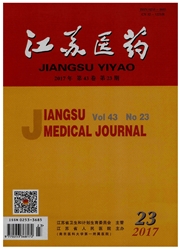

 中文摘要:
中文摘要:
目的建立流式细胞术测定全血网织血小板(RP)的方法,并检测冠心病患者在非体外循环冠状动脉搭桥(OPCABG)围手术期RP的变化。方法在0PCABG术前和术后第1、4、8天,采集20例冠心病患者的空腹静脉血,经噻唑橙孵育后,采用流式细胞术检测RP数量。结果20例冠心病患者在OPCABG术前和术后第1、4、8天RP比例分别为0.35%(0.03%-0.60%)和0.60%(0.23%-0.68%)、1.05%(0.40%-1.78%)、0.30%(0.20%,4-0.80%);其中,OPCABG术后第4天RP比例较术前明显增加(P〈0.01)。结论流式细胞术可有效测定全血中的RP。冠心病患者OPCAN3术后第4天外周血RP数量显著增加,这可能是外科手术后发生阿司匹林抵抗的主要原因。
 英文摘要:
英文摘要:
Objective To establish a method for detecting reticulated platelet(RP) in whole blood by flow cytometry(FCM) and determine the perioperative changes of RP in patients with coronary artery disease(CAD) undergoing off-pump coronary artery bypass graft(OPCABG) surgery. Methods Before OPCABG and on the 1st ,4th and 8th day after operation,the fasting venous blood of 20 CAD patients was collected and incubated with thiazole orange. Then the number of RP was detected by FCM. Results The percentages of RP in 20 CAD patients before OPCABG and on the 1st, 4th and 8th day after operation were 0. 35% (0. 03%-0.60%) and 0. 60% (0. 23%-0. 68%), 1.05%(0. 40%-1.78%) ,0.30%(0. 20%-0. 80%) ,respectively. The percentage of RP on the 4th day after operation was significantly higher than that before OPCABG surgery(P〈0. 01). Conclusion FCM can effectively detect RP in whole blood. The number of RP in peripheral blood of CAD patients significantly increases on the 4th day after OPCABG, which may be a main reason for the aspirin resistance after surgery.
 同期刊论文项目
同期刊论文项目
 同项目期刊论文
同项目期刊论文
 期刊信息
期刊信息
